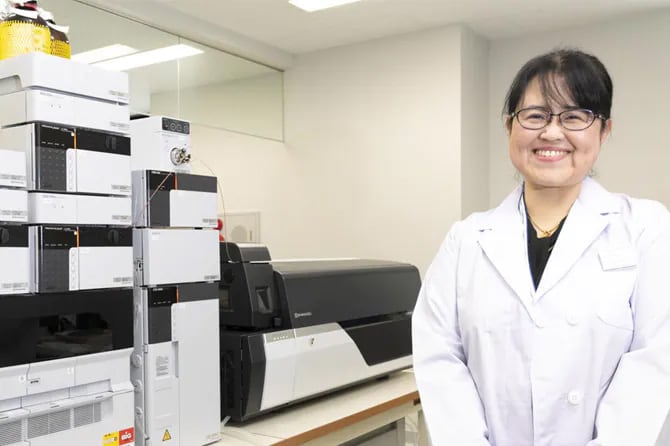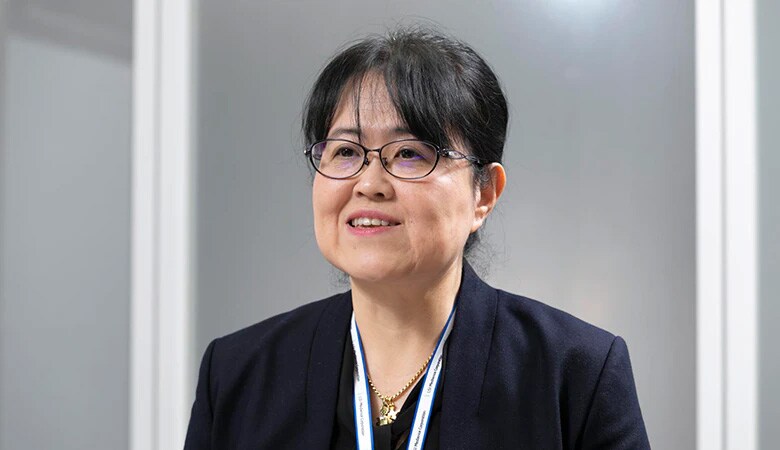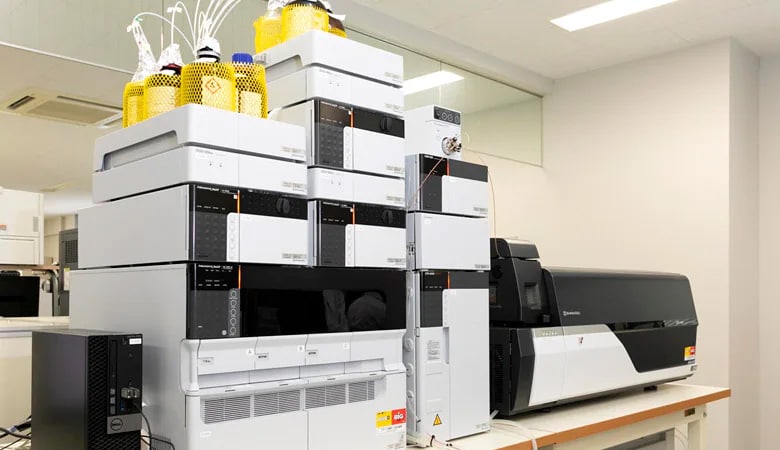The Only Accredited Doping Control Laboratory in Japan:
Protecting Clean Athletes and Ensuring a Level Playing Field


Series: MOMENTUM
In any competition, whether it is a sport or not, participants must be fair. Anti-doping is an activity to protect clean and fair sports and doping control laboratories play an important role in ensuring anti-doping activities and sporting spirit. LSI Medience Corporation, Japan's only doping control laboratory accredited by the World Anti-Doping Agency (WADA), is committed to protecting clean athletes in a fair sports environment. We spoke to Ayako Ikekita, Quality Manager of the Quality Control Group in the Anti-Doping Laboratory at LSI Medience Corporation.
(Note: This interview was took place in 2020 prior to the coronavirus pandemic.)
Bringing together the best facilities and players in a special event
Doping in sport is the use of prohibited drugs and other methods to alter an athlete’s physical and mental capabilities and enhance their competitive performance. Doping not only violates the spirit of fair play and undermines the reputation of the sport, but it also creates concern about the negative effects on the athlete’s health.
The first confirmed incidence of doping in sport was in 1865. After this, doping incidents arose sporadically at all kinds of sporting events until, in 1960, a doping-involved death occurred at the Summer Games in Rome, the largest sporting event in the world. This death sparked a growing debate on doping and led to the introduction of anti-doping tests at the 1968 Winter Games in Grenoble and the 1968 Summer Games in Mexico City. In 1999, the World Anti-Doping Agency (WADA) was formed as a third-party organization that would unify rules on doping, which until then differed between sporting events and countries and territories.
The establishment of the first anti-doping analytical laboratory in Asia was prompted by an international sporting event held in Kobe, Japan in 1985. After WADA’s founding, this laboratory became Japan’s sole WADA accredited doping control laboratory and today is known as the LSI Medience Corporation Anti-Doping Laboratory.
Ayako Ikekita, Quality Manager of the Quality Control Group at LSI Medience Corporation, explains that anti-doping tests performed during a sporting event are divided into two main stages. “One is to collect the samples of urine and blood from athletes. The other is to run those samples through analyzers and report the results to WADA. Here at LSI Medience, we are responsible for the latter task.”

Rules stipulate that doping control testing must be performed within the territory holding the sporting event, and LSI Medience will be in charge of analyzing doping control samples at the upcoming Games in Japan. A new laboratory has even been created not far from its current laboratory in Tokyo to cater specifically to the Summer Games.
Samples are to be collected from athletes morning, noon, and night. Consequently, sample analysis must also be performed around the clock.
“Normally, we would take around ten days to produce results for a single sample, but during the Games, results must be ready almost on the same day.” During the Games, the laboratory will receive around 7,000 samples, which is almost the same number to deal with in a single year.
The number of laboratory staff must also increase substantially to cope with this demand. “We normally operate with thirty laboratory staff, but that’s not enough. We have contacted universities and asked for support from students, associate professors, and sometimes even professors, who can help us with the analysis. We will also invite some experts from overseas.” Several hundred laboratory staff will be involved in samples analysis during the event. Due to these large numbers, staffing assignment and schedule management will also play a vital role in laboratory operations.
Fairness in sport via doping controls
Advancements in analytical instruments enable the acquisition of identical results regardless of who is performing the analysis. Nonetheless, interpreting the data obtained from analysis and deciding the required analytical approaches are not automated. In the end, someone with an expert eye is still needed for the final step.
Test methods have also evolved as doping has become unscrupulous and sophisticated. “Every year, new drugs and doping methods emerge, making it more complicated than before. For this reason, we have to conduct target analysis of prescribed banned drugs and implement comprehensive analysis methods, such as full-scan analysis. These can be achieved because of improvements to analytical instruments’ performance, such as increased sensitivity and resolution power. Then, experts carefully examine whether there are any suspicious shreds of doping on the measurement data generated by these reliable analytical instruments.”

An athlete’s reputation is on the line, so the laboratory cannot afford to make mistakes. To ensure reliable testing, it is expected that the analytical instruments are always the most cutting-edge and capable models. (This photo shows a Shimadzu LCMS-8060 high performance liquid chromatograph mass spectrometer.)
In recent years, blood doping has become a major focus for anti-doping laboratories. “Blood doping promises to enhance athletic performance by improving an athlete’s ability to transport oxygen. Autologous blood transfusion, where an athlete’s blood is collected at an earlier date and then transfused on the day of competition, increases the number of red blood cells in the body and increases the oxygen content of their blood, boosting athletic endurance. This type of blood doping is more difficult to detect than homologous blood transfusion that uses blood from another person.”
In the fight against such blood doping, an individual record called the Athlete Biological Passport (ABP) has been used. The ABP is a doping test method in which biological markers collected from a blood test of an athlete is recorded at regular intervals and collated with the results of an anti-doping test. “ABP data is reported to WADA and assessed by an Athlete Passport Management Unit (APMU), units that have been established at a limited number of WADA accredited laboratories, including ours. ABP data is controlled by WADA in a state where the athlete’s privacy is protected. APMUs assess such data on the tested athlete’s red blood cells, white blood cells, and hemoglobin level and look for any unnatural variations. Doping is detected by a combination of the ABP program and other analytical measurement data.” Using these varieties of methods, the results on what substances were detected from athletes are reported to WADA.
Nevertheless, Ms. Ikekita emphasizes that the mission of a doping control laboratory is not to search for guilty athletes.
“Our mission is to protect clean athletes. Doping not only harms the reputation of the athlete but it also damages the status and attractiveness of sports. Anti-doping tests demonstrate the authenticity of athletic performance and athletic records and help to create a fair and clean sporting environment.”
Once a sample is analyzed during the Games, it will be stored for ten years. Stored samples will be retested when new test methods are developed. This may unveil the existence of prohibited substances that could not be detected with the technology available at the time. This is why we hear about athletes being stripped of their medals a few years after the event.
“It is extremely unfortunate when the outcome of a sporting competition changes after the fact. To prevent that, we work hard to make the best analysis we can do now and to produce uncompromising reports without any errors. I want to take these experiences as a legacy and pass it on to future generations.”
* This article is an English translation of our article originally published on the website “Boomerang”. The information, including affiliates and titles of the persons in this article, are current as of the time of interviewing.
 Copied
Copied

